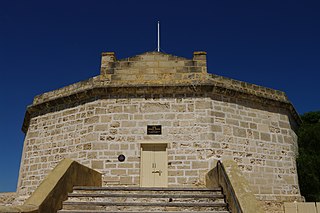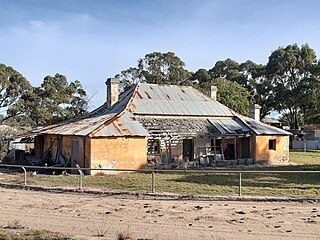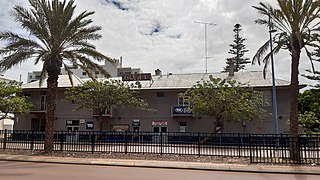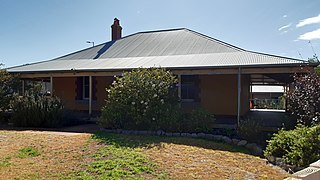
The City of Cockburn is a local government area in the southern suburbs of the Western Australian capital city of Perth about 8 kilometres (5 mi) south of Fremantle and about 24 kilometres (15 mi) south of Perth's central business district. The City covers an area of 167.5 square kilometres (64.7 sq mi) and had a population of over 104,000 as at the 2016 Census.

East Rockingham is an industrial suburb within the Kwinana Industrial Area, part of Perth, and located within the City of Rockingham.

The City of Rockingham is a council and local government area, comprising the south coastal suburbs of the Western Australian capital city of Perth.

The Shire of Murchison is a 49,500 km² local government area (LGA), within the Murchison sub-region, in the Mid West region of Western Australia. Encompassing most of the Murchison and East Murchison goldfields, the shire is named after the Murchison River. It is Australia's least-populated LGA and the only one without an official town. Five sparsely-populated rural localities, with a collective population of 101, comprise the entire shire. The shire offices, located 300 kilometres (186 mi) northeast of Geraldton, are the focal point of Murchison Settlement, a small part of the Murchison locality.

The Shire of Boyup Brook is a local government area located in the South West region of Western Australia, about 270 kilometres (168 mi) southeast of Perth, the state capital. The Shire covers an area of 2,829 square kilometres (1,092 sq mi) and its seat of government is the town of Boyup Brook.

The Shire of Carnamah is a local government area located in the Mid West region of Western Australia, about 310 kilometres (193 mi) north of Perth, the state capital, and about 181 kilometres (112 mi) south of the city of Geraldton. The Shire covers an area of 2,876 square kilometres (1,110 sq mi) and its seat of government is the town of Carnamah.

The State Register of Heritage Places is the heritage register of historic sites in Western Australia deemed significant at the state level by the Heritage Council of Western Australia.

Fremantle Fortress was the combined coastal defences protecting the harbour of Fremantle, Western Australia, since the mid-1930s and, predominantly, during World War II. The coastal defences of the Fremantle Fortress stretched along the coastline of Perth from Cape Peron to Swanbourne and also included installations on Garden Island and Rottnest Island. While the first coastal batteries of the future Fremantle Fortress were installed at Arthur Head in 1906, the military installations protecting the harbour were expanded in the 1930s, being eventually dismantled again by 1963.

The Peron Battery, at Cape Peron, was the southernmost of the Fremantle Fortress coastal defence batteries in Western Australia. Also referred to as K Heavy Battery, it was established in January 1943 and, like the Challenger Battery on near-by Garden Island, it was equipped with two mobile 155 mm guns. Additionally, it also operated two 18-pounder guns which were withdrawn once the Collie Secondary Battery became operational on Garden Island. The duty of the main guns was to cover the southern access to Cockburn Sound while the 18-pounder guns protected the a boom net which spanned between Cape Peron and Garden Island. The main battery was withdrawn again in December 1944 but the observation post and one of the Panama mounts of the Peron Battery are still preserved and accessible.

The Chesterfield Inn and its stables are State Register of Heritage Places-listed buildings in East Rockingham, Western Australia. The Inn was built in 1855 in the vernacular Queen Anne Revival style and is the oldest commercial building in its area.

Day Cottage, also referred to as Ellendale, is a State Register of Heritage Places-listed Victorian-style cottage in East Rockingham, Western Australia.

The Rockingham Hotel is a historic hotel and pub in Rockingham, Western Australia, its origins dating back to 1886, when Rockingham was an important export location for Western Australian timber.

Hymus House is a State Register of Heritage Places-listed Victorian bungalow style house in East Rockingham, Western Australia.
Picton is a suburb of the City of Bunbury in the South West region of Western Australia. Both the South Western Highway and the South Western Railway dissect the suburb from east to west.
Stratham is a semi-rural locality of the Shire of Capel in the South West region of Western Australia, located on Geographe Bay and on Bussell Highway. In the south-west, a section of the Tuart Forest National Park is located within Stratham.
















